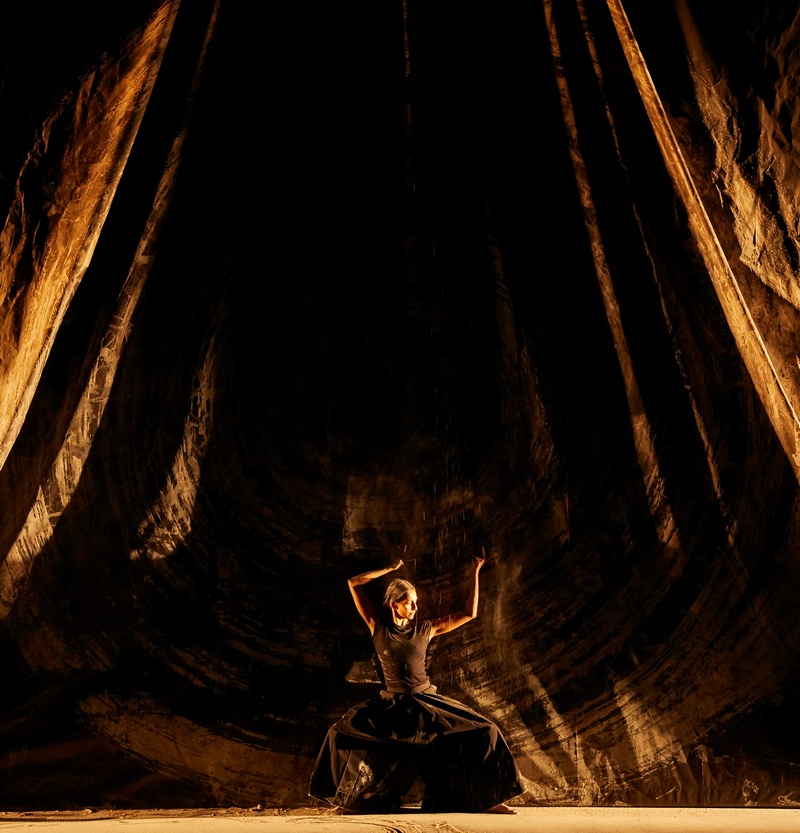In spite of the Covid-19, French dance theatre company from Toulouse, Compagnie 111 www.cie111.com/ recently visited the lately sleepy city with their production called “aSH“. Ash is not merely the solid residue of perfect combustion, but a process, just like this choreography is. It is a fertilizer, a cycle of death and birth. I always thought that Earth material can be very inspiring for artists and writers if it is lined up in a proper way. Many traditions and cultures celebrate ash, and not just traditions but also pop culture. It just crossed my mind “Ashes to ashes, dust to dust“…in never enough celebrated (by D.Bowie). In this case, in Toulouse’s modern dance choreography ash possesses the potentiality of living. A dancer is originally from India and I wish to mention that cremation grounds have particular energy in many cultures around the world, especially in India: it is life and death according to Indian culture is the same within the cycle of reincarnations. So what does Shiva do here? The India god Shiva destroys and dances. Here Shantala Shivalingappa is Shiva, the lord of the dance. According to the old texts, Shiva has over one thousand names, and his body is covered with ash. Shantala Shivalingappa’s dance revolves around features of this god.
India origin dancer Shantala danced with celebrated German choreographer Pina Bausch, she worked with Peter Brook, Bartabas, and other celebrated dancer originally from India, now London, Sidi Larbi Cherkaoui. This particular dancer born in Madras, but grew up in Paris now she lives between two worlds; between India and Europe, and between classical Kuchipudi (traditional dance from India) and modern, contemporary dance. Marvelous! In the „aSH“ production “Her dancing is a continuous balance between Hindu mystic and quantum physics”, said Aurélien Bory, designer, and scenographer of the show. Dancers from India are usually very well trained with the rigor of traditional Indian dance and characteristic of imposing solo (mainly) stage presence with powerful facial expressions, the virtuosity of lower feet, and the undulation of arms. A characteristic technique extremely difficult for a classical ballet dancer, so I heard. Aurélien Bory here applied the mathematical rigor because he crosses the history of mathematics in India, with kolam, the welcome design practiced by women using rice powder to draw patterns on the ground. Shantala in this production draws circles and pattern circles in the ash, with her toes and lower foot muscles. Anyone who thinks this is easy must be very wrong, and yes, I wouldn’t try this at home! Her dance, in the collaboration with a musician, a drummer on the stage with her makes an offering to the new day. A ritual of sanctification and an invitation to the divinities. Kolam practice in India consists of geometric shapes has been passed from mother to daughter and now it is showed and passed on to the audience in the Toulouse Compagnie 111 production “aSH” featuring Indian dancer Shantala Shivalingappa recently performed at
Belgrade Dance Festivial www.belgradedancefestival.com

